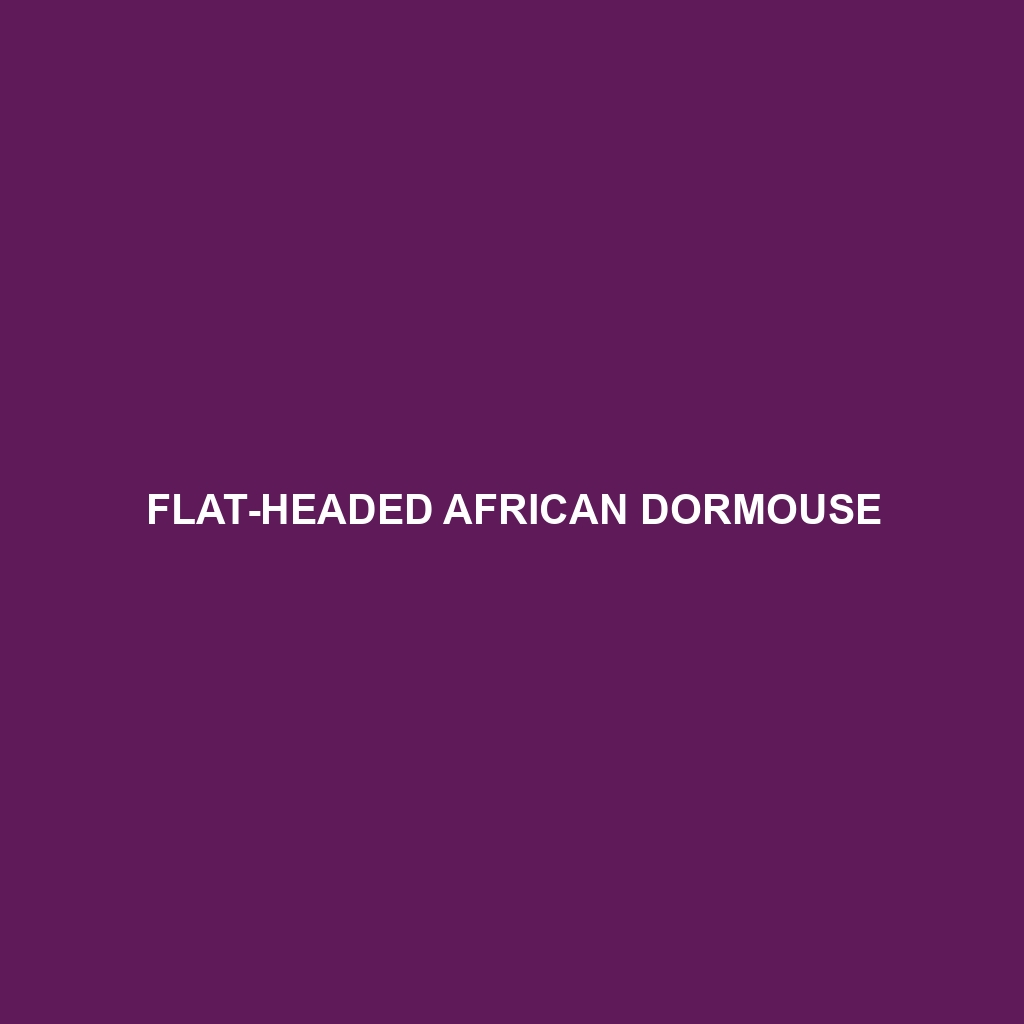Flat-headed African Dormouse
Common Name: Flat-headed African Dormouse
Scientific Name: Graphiurus platysoma
Habitat
The Flat-headed African Dormouse is primarily found in the subtropical and tropical forest regions of Central and Southern Africa. Its habitat spans countries such as Tanzania, Zambia, and Angola, where it thrives in moist, dense woodlands and scrubland. These dormice prefer areas with ample foliage that provide cover and nesting sites, making them reliant on the health of their forest ecosystems.
Physical Characteristics
This small rodent averages around 9 to 11 cm in length, with an additional tail measuring approximately the same. The Flat-headed African Dormouse is characterized by its flat head, large eyes, and prominent ears. Its fur is soft and dense, typically exhibiting a reddish-brown color on its back, with a lighter, creamy underbelly. Distinctive features include its bushy tail and dark markings on its face, making it easily recognizable among other dormice.
Behavior
The Flat-headed African Dormouse is primarily nocturnal, exhibiting activity during the night. It is an agile climber, adept at navigating trees and shrubs in search of food. Socially, these dormice are solitary but may share nests during the cooler months. They are known for their playful behavior, often engaging in bouts of climbing and exploring their environment.
Diet
The diet of the Flat-headed African Dormouse primarily consists of fruits, seeds, nuts, and insects. This omnivorous feeding habit allows them to adapt to various seasonal food sources. Their foraging strategies include hoarding food in their nests for later consumption, which plays a crucial role in their survival throughout the harsher seasons.
Reproduction
Breeding for the Flat-headed African Dormouse typically occurs during the rainy season, which spans from November to March. Females can give birth to two to five offspring per litter after a gestation period of approximately 30 days. The young are born hairless and blind, relying on their mother’s care until they are capable of independent living, usually around six weeks of age.
Conservation Status
The Flat-headed African Dormouse is currently classified as vulnerable by the IUCN Red List due to habitat loss and degradation from agriculture and logging. Conservation efforts are essential to protect their natural habitats and ensure the survival of this unique rodent.
Interesting Facts
One fascinating fact about the Flat-headed African Dormouse is its ability to enter a state of torpor. This physiological state allows them to conserve energy during periods of extreme temperature fluctuations, making them resilient to changing environmental conditions.
Role in Ecosystem
The Flat-headed African Dormouse plays a vital role in its ecosystem as a seed disperser. By consuming fruits and seeds and excreting them in different locations, it contributes to the growth of various plant species. Additionally, they serve as prey for larger birds and small mammals, which helps maintain the ecological balance.
